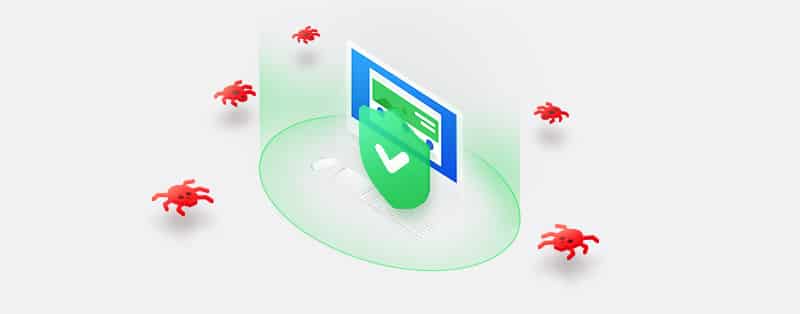How to Protect Your PC Against Malware in 2024

Protecting your PC against cyber threats is no mean feat. You need constant assistance from specialist security providers and extra vigilance to secure your personal computers from threats like malware. Today, malware targets not just your home computers but also the mobile gadgets you and your family use.
The challenge is more enormous than you would think. Last year, about 80 million malware attacks were on record in the United States every month. Even further, the United States as a whole is the subject of more than half of all malware attacks worldwide. Your web servers, Facebook, the social networks you use, text messages, and downloaded files make you a malware attack target.
Almost any online process or even a friend’s USB stick will infect your computer, so it’s crucial to use a security app that can offer an absolute preventive defense, helping you before you get infected.
The Web’s Dark Side
Firstly, hackers design malware for sinister purposes; this malware causes data theft even up to the point of extortion. When malware infects the computer , the effects can range from a minor inconvenience to severe loss of information or a considerable expense at times.
Next, malware can cause more damage than you can imagine. For example, if a hacker takes over an email account through a virus, they can reset any linked account passwords, including online banking and social media accounts.
To deceive people into handing over their login credentials, hackers may also use social engineering and phishing.
Different Forms of Malware
Knowing the types of malware you’re up against is the first line of defense. These are some of the different forms this malware takes:
1. Virus
This is designed to damage any computer device. If it has taken root, there are many unpleasant things a virus can do. The virus changes system configuration; it deletes files on a PC; emails get hacked, and even worse. Again, it can even slow down your PC. The kinds of viruses that hack email accounts also propagate through email, infecting everyone in a person’s contact list.
2. Adware
This is software that shows or installs unwanted advertisements while a user is online. It typically comes in the form of pop-up advertisements or banners or redirects your browser to a particular website. While adware will not cause direct damage, it can be very annoying and can even contain spyware in the worst cases.
3. Spyware
As the name implies, they are spyware controls, or spies, on your computer. When spyware has taken root, anything you do gets checked out. Your data, private emails, browsing activity, and more are vulnerable to hackers.
4. Ransomware
This malware locks you off your computers or forbids you from downloading your files. You must pay a ransom to release the files. Hackers often use social engineering tricks to fool users with well-designed phishing emails or an infected website to distribute ransomware. The ransomware installs itself on devices when a user falls victim to them.
5. Scareware
This one uses social media to manipulate victims into installing unsafe apps. The frightening aspects are the tactics of fear this malware imposes on computer users. Scareware writers trick consumers into believing they have a virus on their computer by alleging a malware problem with your computer. Then you are fooled into paying for the software and serving yourself with malware to repair it.
Possible Signs of Malware Infection
A funny and tricky scenario about malware is that it is not always noticeable on computer systems. Sometimes, users have no idea that they are using phones, laptops, or machines compromised by malware. Fortunately, sure telltale signs exist:
After making a subtle alteration to the way your computer operates, malware exposes itself. Look out for any advertisements or pop-up windows that are meaningless and also pay attention to pop-up ads that load directly after a web page completely loads. Such promotions include everything from a casino’s free games, a game connection, or some other objectionable content. Flashing colors or high pitched noise shows the most distracting advertising. Others challenge closing and blocking the content that you are attempting to access.
You might note that it runs slower on your computer. Also, you can encounter a sudden shortage of storage capacity at the same time.
Have any changes or alterations in the actions of your web browser occurred? The hijacking of malicious browsers can be very obvious. Has your default search engine or homepage changed? These are signs you should watch out for and closely pay attention to while using your PC.
How Does Malware Infect a Computer?
Once you have made any ‘missteps,’ malware is usually installed. Attackers are searching for ways to fool you into running their malware. It is why there are lots of faces with malware.
Let’s take a look at the most popular lousy internet behaviors that contribute to malware making its way to your computer.
1. Downloading from untrusted sources
Downloading files from untrusted pages or unknown sources is the most common way to get malware.
2. Browsing unauthorized websites
Many users browse paid content free of charge using illicit websites. Watching pay-per-view sporting games from just any kind of VPN or downloading the new blockbuster film might look harmless. But beware—such programs sometimes do more damage than good.
3. Clicking on the “your computer is infected” alarm pop-ups
A pop-up on the computer comes out of the blue. In bold font, it can clarify that your machine has malware and needs a security upgrade. Such warning notifications also connect to a solution-based application to “clean up” the virus, which will be added to the device instead. The website could also show pop-ups to alert you to uninstall your antivirus program in the case of web page links. Others recommend you ignore and continue with any alerts from your operating system. All these pop-ups are a means of infecting your PC with malware.
4. Falling into Social Engineering Scams
Social engineering is the secret to malware’s effectiveness. Social engineering harnesses aspects of human psychology. Criminals scamming people with this method rely on tricking persons into voluntarily providing access to their data without necessarily utilizing any hacking techniques. Someone using this technique might pretend to be an IT support technician or from your bank. They could try to trick people into revealing a password from a bogus address over the phone or through an IM.
5. Opening infected removable media
Viruses can propagate by infecting removable drives such as USB flash drives or some external storage like your Kindle or external hard drive.
Protecting Your Computer from Malware
Shielding your PC from Malware is one cybersecurity measure any serious PC owner should take. Here is how to protect yourself from PC-related Malware.
1. Safeguard Your Network
Be sure that your network router has a password protection and that it is difficult to use the usual password of the network provider. To stop unauthorized entry, make sure you have a firewall installed and running on any device you use. Not only is a secure network a first step in securing your PC, but it also covers the handheld devices linked to your home network.
2. Avoid Spam
Spam can enter into your computer through different means. It can be during your browsing activities, so, ensure that you don’t open up spam of any kind while on the Internet. Know the spam in your junk mail isn’t just letters. Spam can also come in private updates such as in social media feeds, pop-up windows on blogs, or ads. Be wary of any unsolicited tech help, including on and offline offers.
3. Parental Controls
On every computer used in your family’s network environment, you can set up parental controls. Making sure that only administrators can install new applications on the computer and, if possible, block access to the Internet for guest users.
4. Passwords in Web Browsers
Don’t save passwords, regardless of the user, in your web browser. Using a password manager that offers an extra layer of authentication is more reliable. Password Manager comes packaged on your PC with Full Protection or Premium Security or can be downloaded and enabled on your PC, Mac, Android, or iOS devices separately.
5. Keep Programs Up-to-Date
Ensure that you have all your apps updated. This is especially to help defend your PC against attacks that threaten its vulnerabilities. It covers the operating systems, web browsers, security programs, and plug-ins such as Adobe Flash, Acrobat, Java, or multimedia players such as QuickTime and Windows Media Player.
Conclusion
Malware is not just widespread; it is also almost impossible for you to avoid it without the right help. There are a lot of straightforward preventive measures that can reduce and stop the intruding activities of malware. Follow the necessary precautions we have highlighted above. A paid VPN will also be of utmost importance to your PC’s security activities.
